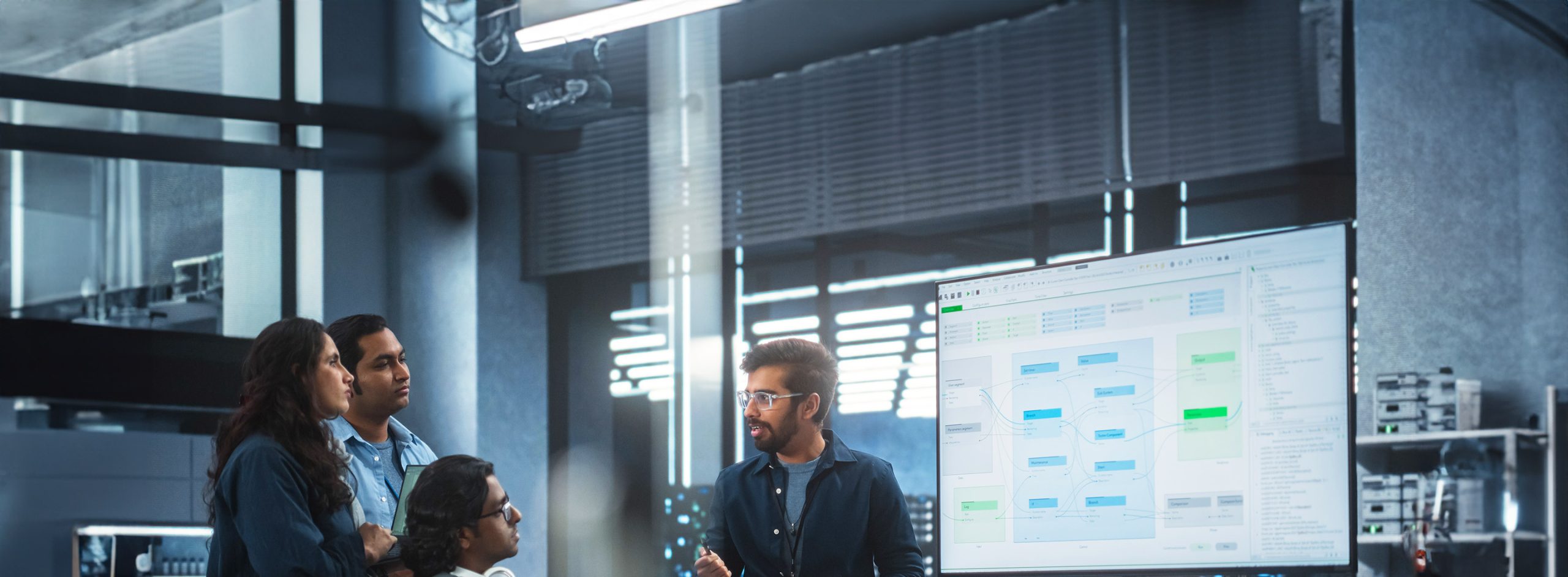The post below is originally published on Dell Boomi blog on February 7th, 2017 by Nick Mukhar.
Thousands of healthcare technology professionals – from patients to practitioners to technology providers – are set to gather in Orlando, Fla., later this month for the annual HIMSS conference. HIMSS is one of the largest and most important healthcare IT conferences in the United States.
Perhaps the most crucial task facing healthcare technology professionals is the integration of applications and data among the diverse players in the healthcare ecosystem, including doctors, hospitals, insurers, employers, governmental organizations, device makers, pharmaceutical companies and patients.
To set the stage ahead of HIMSS, we spoke with Sudhir Kulkarni, VP of Digital at Persistent Systems, a Dell Boomi systems integration (SI) partner focused on software product development and technology services for the healthcare industry.
The first part of our discussion, which posted last week, focused on the current state of digital transformation in healthcare as a whole. Today in Part II of our discussion, we shift our conversation to specific health-tech improvements on the immediate horizon, what to expect at HIMSS 2017 next week, and healthcare-specific integration challenges.
Visit Dell Boomi at HIMSS Booth #7461 to see a live demo of how our integration platform as a service (iPaaS) helps solve the unique challenges facing the healthcare industry. You can also meet with the Persistent Systems team at booth #7373 and kiosk #36 in the Connected Healthcare Pavilion.
Boomi: In 2017 what do you think will be the most significant technology advances related to healthcare?
The move to healthcare becoming software-driven is accelerating, and that will continue this year. Virtual
Sudhir Kulkarni, President of Digital, Persistent Systems
care will grow in popularity, and insurers will expand support for a broad range of services through videoconferencing and other consumer communication devices connecting healthcare providers and patients.
MACRA (Medicare Access and CHIP Re-Authorization Act of 2015) will further accelerate initiatives to obtain richer data sets for reporting and for powering new business applications based on quality of healthcare provided. Cognitive technology like IBM’s Watson will help organizations improve data accuracy.
Also, digital health advisers – similar to what we see in the financial space – will start making inroads, powered by significant advancements in AI/machine learning. High-touch care management will be complemented by automated, low-touch self-service care management.
2017 should be tremendously exciting.
Boomi: How will these advancements improve healthcare providers’ understanding of patients?
SK: The bedrock of all this will be the ability to securely and efficiently access, through APIs, repositories of big data from the IoT, wearables, social media, curated public data sets (like credit bureau information from LexisNexis), research, and of course, episodic care. This will all lead to a better understanding of patients’ financial, social and behavioral context, and the running of predictive and prescriptive analytics on this data to reveal trends across populations and micro-populations. This will all need to be complemented by transformative digital experiences to achieve higher patient engagement.
Boomi: Does this mean we’ll see a more significant industry shift to cloud-based systems than before?
SK: Yes. Healthcare organizations will invest significantly in the health cloud in 2017. They’ll move data from expensive on-premises data centers to robust cloud platforms from providers such as Dell, Microsoft, and Salesforce.
Boomi: What are some of the obstacles to digital transformation that are unique to the healthcare industry?
SK: The introduction of Health IT in the form of the Electronic Medical Records (EMR) implementation has been a productivity drain on providers, with almost 25 percent of clinicians’ time being spent on interacting with the EMR. Investment fatigue and unrealized expectations have created a mood of caution in digital investments.
Data integration is another unique challenge. There is over-engineering in healthcare with overlapping and rich data standards and formats. Yet the implementation is driven in a proprietary manner. Healthcare needs truly interoperable data, similar to how telecom operators use it.
In spite of these obstacles, emerging needs are forcing a continued interest in innovation. Technology vendors should focus on solving existing problems and create trust in technology before trying to sell radical innovation in business models.
Boomi: What are some of the key components of Persistent Systems’ Blueprint for Enterprise Systems By Design?
SK: These are incredible times. What we used to only imagine in movies is now becoming reality. Persistent Systems’ blueprint for enterprise digital transformation advocates delivering transformative experiences at speed, using secure and efficient APIs, to access and exploit big data repositories.
Boomi: What role does Dell Boomi play within that model, particularly to help solve those unique integration challenges for the healthcare industry?
SK: Dell Boomi is a key component within this model. Boomi powers the API, providing the critical piping between data and applications that make sense of that data. This will become increasingly important as the industry becomes more software-driven, and as integrating data from several repositories is necessary to understanding trends in patient care.
Boomi: What are some of the healthcare technology trends you expect to drive conversations at HIMSS 2017 later this month?
SK: I expect there to be a lot of discussion about new regulations such as MACRA, which requires a more fluid approach to reporting in healthcare. That means quality departments and IT teams will need to have a better working relationship than ever before, and they’ll likely need technology solutions to help them share key business information.
Vendor-provider partnerships will also be a popular topic. These partnerships are really accelerating as providers look to create new sources of revenue and vendors seek real world environments to test and develop new technologies.
Artificial intelligence has huge potential to drive up productivity and possible profession-changing developments in some specialties like radiology. There will be great interest in learning how this is shaping up for the healthcare industry.
Population health analytics will continue to capture a lot of attention. There will be more success stories as well as a clearer understanding of what will work and, probably more importantly, what won’t work.



